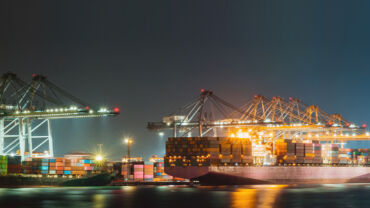When goods are imported into the U.S., they can often be stored in either a foreign trade zone (FTZ) or Customs’ bonded warehouses to take advantage of various savings and operational benefits. The main distinction between the two is the U.S. Customs regulations and procedures that they are bound to follow.
What are the differences between an FTZ and a Custom bonded warehouse?
A U.S. Foreign Trade Zone is a designated geographical area within the U.S. but is not considered part of U.S. commerce, and is therefore not subject to normal customs regulations. Goods imported into an FTZ can be stored, manipulated, or manufactured without being subject to import duties or taxes until they enter the commerce of the U.S. On the other hand, a Customs bonded warehouse is a facility that is licensed and regulated by the Customs authorities in which imported goods are stored before they are either released for consumption or re-exported.
What are the benefits and limitations of Customs bonded warehouses?
Benefits:
- Duty Deferral and reduction: Duty payment can be delayed, reduced, or even eliminated in some cases, providing cost savings and improved cash flow for businesses.
- Re-exportation opportunities: Goods can be re-exported without entering the domestic market, making it easier for businesses to access international markets and expand their global reach.
- Tax savings: Businesses may be able to benefit from tax advantages by operating in a bonded warehouse, as taxes are not levied until goods are withdrawn for local consumption.
- Inventory management Flexibility: Businesses can strategically store inventory in bonded warehouses, allowing them to control stock levels based on market demand and fluctuations. This flexibility can improve supply chain efficiency and reduce holding costs.
Limitations:
- Five-year storage limit: In the U.S., bonded warehouses have a five-year limit from the date of import for storage, after which the goods must be removed or face potential penalties.
- Limited manufacturing: Some bonded warehouses are designated for manufacturing, but only if the goods are ultimately exported.
- Only foreign status goods: Domestic status goods are not allowed in a bonded warehouse.
- Storage costs: While bonded warehouses provide duty deferral benefits, there are still storage costs associated with using these facilities. Businesses need to consider these costs when deciding to store goods in a bonded warehouse.
- Limited access: Access to goods stored in a bonded warehouse is restricted to customs authorities and authorized personnel. Businesses may face limitations on the accessibility and availability of their goods.
What are the benefits and limitations of U.S. FTZ warehouses?
Benefits:
- Duty Deferral and reduction: Duty payments can be delayed, reduced, or even eliminated, in some cases, providing cost savings and improved cash flow for businesses.
- Re-exportation opportunities: Goods can be re-exported without entering the domestic market, making it easier for businesses to access international markets and expand their global reach.
- Tax savings: Businesses may be able to benefit from tax advantages by operating in a bonded warehouse, as taxes are not levied until goods are withdrawn for local consumption.
- Merchandise Processing Fee (MPF) minimization: U.S. FTZs can benefit from weekly entry procedures. If an FTZ is granted this privilege, one entry can be made on an entire week’s worth of shipments instead of by each import. This can be a tremendous savings because the MPF caps out at a maximum amount per entry and one entry per week can greatly reduce the fees incurred by an operation.
- Value-Added activities: Goods can be inspected, repaired, repacked, manipulated, manufactured, or destroyed within U.S. FTZ warehouses, offering flexibility for businesses engaged in value-added operations. This allows products to be enhanced before they enter the domestic market or are re-exported.
- Foreign and domestic status goods: Both foreign and domestic status goods can be stored together in a U.S. FTZ.
- Inverted tariffs: If manufacturing occurs, the foreign goods that are utilized in the production can assume the identity of the finished good upon entry into the commerce of the U.S. The duty rate of the finished good can be paid on the value of the foreign components if non-privileged status is elected for the components.
- Privileged Foreign (PF) Status: Goods in a U.S. FTZ can be admitted in PF status. This allows the U.S. FTZ to maintain the duty rate of the component that was elected at the time of admittance. For example, if the good is going to be manufactured into something that has a lower duty rate than that of the component, by electing PF status, the duty on the component will be paid instead of the duty on the finished good.
- Indefinite storage: Merchandise can remain in an FTZ warehouse indefinitely, providing long-term storage options. Businesses can strategically store inventory in a U.S. FTZ, allowing them to control stock levels based on market demand and fluctuations. This flexibility can improve supply chain efficiency and reduce holding costs.
Limitations:
- Limited location: While U.S. FTZs are located in every state, they are generally located within 60 miles of the outer limits of a port. They must be easily accessible to the CBP Service Port Director.
- Initial setup costs: Setting up and operating within a U.S. FTZ may involve initial costs for businesses, including application fees, security requirements, and compliance-related expenses.
- Strict compliance requirements: U.S. FTZs are subject to strict customs regulations and compliance standards. Businesses must adhere to these requirements to maintain their FTZ status, which can involve additional administrative efforts and potential penalties for non-compliance.
- Security and risk: U.S. FTZ warehouses need to meet strict security standards to prevent theft or loss of goods. Businesses need to assess the security measures of the FTZ to ensure the safety of their valuable inventory.
How to choose between an FTZ or Customs bonded warehouse?
When deciding between a U.S. FTZ warehouse and a Customs bonded warehouse, businesses should consider various factors to make the best choice. It depends on their business objectives, location, industry-specific activities, customs compliance capability, time restrictions, cost analysis, security measures, and potential trade policy changes. Both a U.S. FTZ and bonded warehouse can offer benefits in duty deferral, potential duty elimination, and tax-saving benefits.
If an operation has additional requirements such as manufacturing, and the need to store both domestic and foreign-status goods, it could benefit from an inverted tariff or privileged foreign-status election. In such cases, an FTZ may be worth looking into for additional savings and benefits.
_____________________________________________________________________________________________
For more information, check out our e-book on Building a business case for foreign trade zones. Additionally, the newly released 2023 Corporate Global Trade Report has key survey insights into the leading challenges and trends of the current global trade environment.”
_____________________________________________________________________________________________








